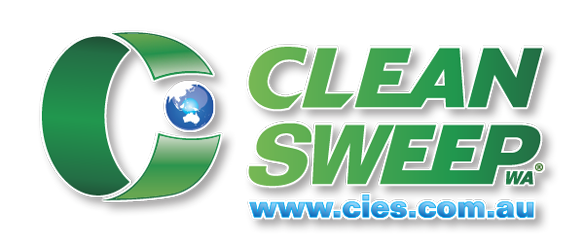Warehouses, with their vast floor areas, high traffic, and bustling operations, require a consistent and effective cleaning strategy to maintain a safe and efficient working environment. A well-maintained warehouse floor can not only contribute to improved productivity and cleanliness but also ensure compliance with industry regulations and standards. In this comprehensive guide, we will demystify the essentials of warehouse floor cleaning, examining various cleaning techniques, equipment such as scrubbers and sweepers, and best practices that allow property developers, municipal councils, universities, government departments, and warehouse businesses to maintain a pristine and orderly warehouse environment.
A clean and well-maintained warehouse floor plays a critical role in safeguarding employee safety, minimising the risk of accidents and injuries, and fostering an environment where productivity thrives. Warehouse floor cleaning involves the removal of dirt, dust, debris, and spillages that can pose significant hazards in a busy facility. However, achieving a clean warehouse is not a one-size-fits-all approach. Several factors, such as the type of flooring material, the warehouse operations, and the equipment utilised within the facility, will impact the cleaning methods and processes required.
By availing the services of professional floor cleaning providers like Cleansweep WA Pty Ltd, warehouse businesses can benefit from expert guidance and tailored solutions that address their unique needs, maximising efficiency while ensuring compliance with industry standards. These providers offer a wide array of cleaning solutions, including construction site cleanup, emergency spills and cleanup, scrubbers and concrete polishing, tow behind sweepers, walk behind sweepers, fleet care, large sweepers, and small sweepers – each designed to cater to specific needs and situations.
In the following sections, we will delve deeper into warehouse floor cleaning techniques, equipment, and best practices, empowering you to make informed decisions and select the optimal approach to achieve and maintain a clean, safe, and well-organised warehouse environment.
Essential Warehouse Floor Cleaning Techniques
Effective warehouse floor cleaning involves various techniques that address the different types and degrees of contamination present within a facility. Some vital cleaning methods include:
1. Sweeping: Large industrial sweepers can efficiently remove dirt, dust, and debris from warehouse floors, providing a baseline level of cleanliness. Walk-behind and tow-behind sweepers cater to different warehouse sizes and layouts, ensuring thorough coverage.
2. Scrubbing: Industrial scrubbers remove stubborn stains, grime, and deposits from warehouse floors using a combination of water, cleaning agents and abrasive scrubbing action. Scrubbers are especially useful for deep cleaning and maintaining large warehouse floor areas.
3. Concrete Polishing: This process involves mechanically grinding and polishing a concrete floor using diamond abrasives, resulting in a smooth, durable and easy-to-maintain surface ideal for warehouse facilities with high traffic flow.
4. Spill Management: In warehouses dealing with hazardous materials, it is crucial to have a spill response plan and equipment in place to contain and clean up any accidental spills quickly and safely.
Essential Warehouse Floor Cleaning Equipment
Investing in high-quality, specialised cleaning equipment is crucial for efficient warehouse floor maintenance. Key cleaning equipment for warehouse businesses include:
1. Industrial Sweepers: Walk-behind and tow-behind sweepers are highly effective at removing dirt, dust and debris from warehouse floors, providing a quick and efficient solution for maintaining cleanliness across large areas.
2. Scrubbers: Floor scrubbers use rotating brushes, water, and cleaning agents to remove stubborn grime and deposits from warehouse floors. These machines are available in various sizes and configurations to suit specific facility requirements.
3. Spill Kits: Emergency spill kits contain a variety of absorbent materials and containment tools tailored to different spill types (general-purpose, oil, and chemical spills). These kits help warehouse staff respond quickly and effectively to accidental spills, minimising the risk of injury and environmental contamination.
4. Protective Gear: Warehouse staff responsible for cleaning should have access to proper personal protective equipment (PPE) such as gloves, goggles, and aprons to ensure their safety during the cleaning process.
Best Practices for Warehouse Floor Cleaning
Adhering to best practices for warehouse floor cleaning can help businesses maintain a consistently clean, safe and efficient facility:
1. Develop a Cleaning Schedule: Establishing a regular cleaning schedule ensures that warehouse floors remain clean and organised at all times. This schedule should outline the frequency of different cleaning tasks, specific areas and equipment to be serviced, and the personnel responsible.
2. Employee Training: Regularly train warehouse staff in appropriate workplace safety and cleanliness procedures, ensuring they are equipped to both prevent and respond to potential hazards effectively.
3. Designate Cleaning Zones: Designate specific areas for storing cleaning equipment and supplies, facilitating easy access during routine cleaning tasks and emergencies.
4. Monitor and Revise: Regularly assess the effectiveness of your warehouse floor cleaning strategy. Adapt and revise processes as needed to ensure ongoing compliance with industry standards and best practices.
Maintaining a Sustainable Warehouse Environment
In addition to ensuring a clean and safe warehouse, businesses should also consider implementing sustainable practices as part of their overall cleaning and maintenance strategy. Some sustainable cleaning tips include:
1. Eco-friendly Cleaning Products: Use environmentally-friendly cleaning agents to minimise damage to the surrounding environment and reduce health hazards posed by volatile organic compounds (VOCs).
2. Proper Waste Disposal: Adhere to local and national waste disposal guidelines to ensure that waste materials are managed responsibly and with minimal environmental impact.
3. Energy-efficient Equipment: Invest in energy-efficient cleaning equipment to reduce energy consumption and related operational costs.
Conclusion
A clean, well-maintained warehouse floor is a critical factor in fostering a safe and productive working environment, meeting industry standards, and preventing costly accidents and injuries. By investing in proper cleaning techniques, equipment, and best practices, warehouse operators can consistently maintain cleanliness and enhance overall facility efficiency.
Professional warehouse floor cleaning providers like Cleansweep WA Pty Ltd can offer tailored solutions catered to your facility’s unique needs, ensuring that your warehouse floors remain pristine and in top condition. Reach out to Cleansweep WA Pty Ltd today, and take the first step towards achieving a cleaner, safer, and more efficient warehouse environment.

